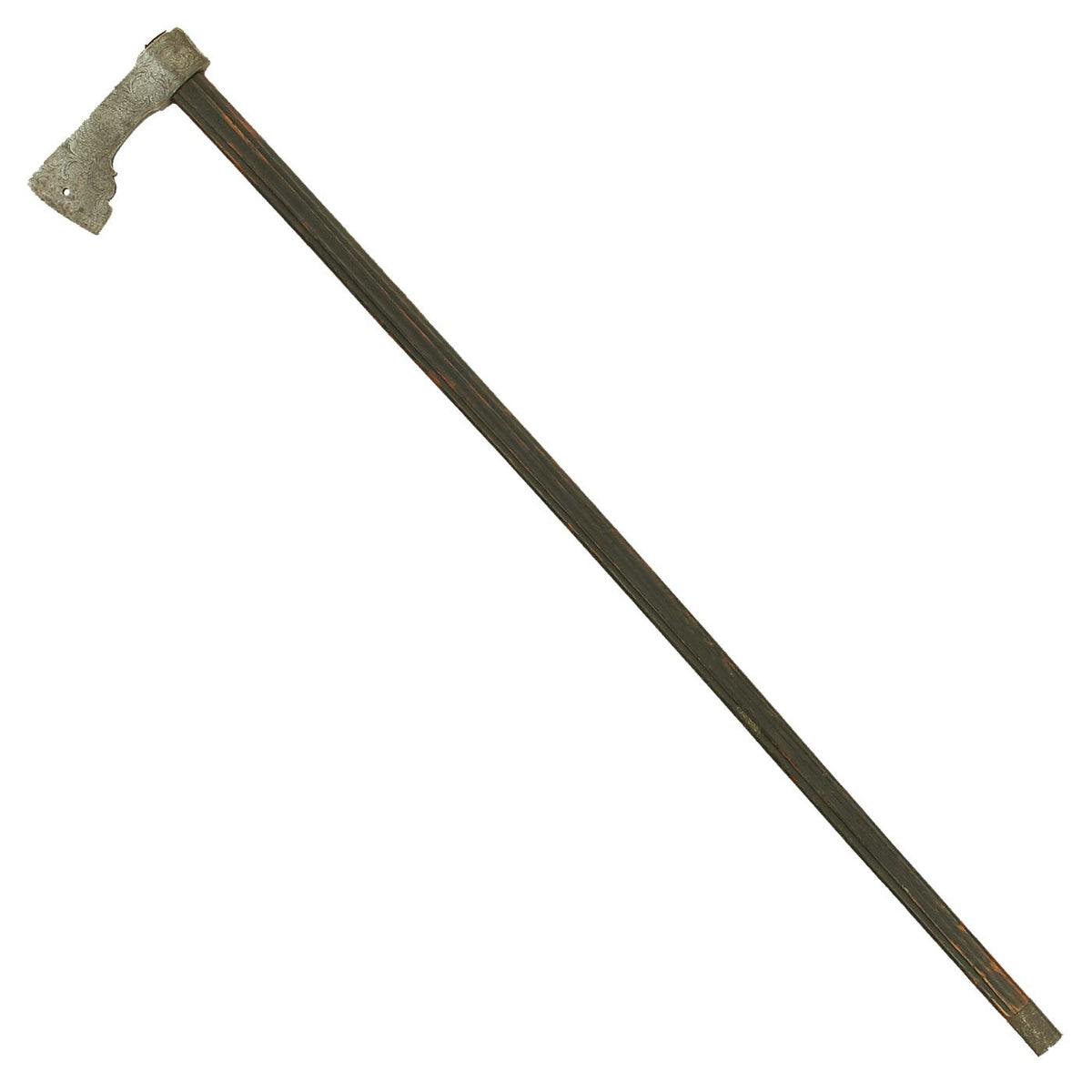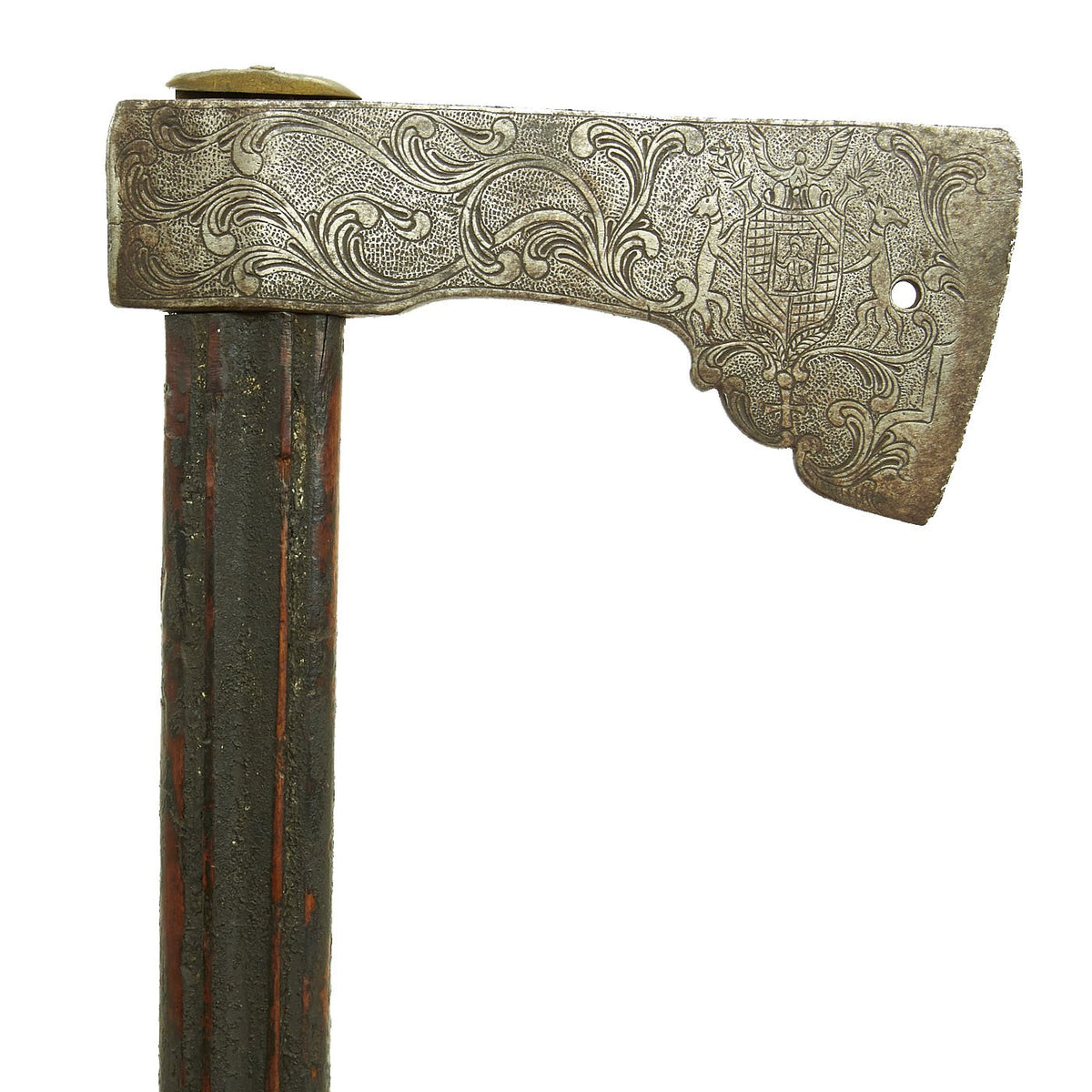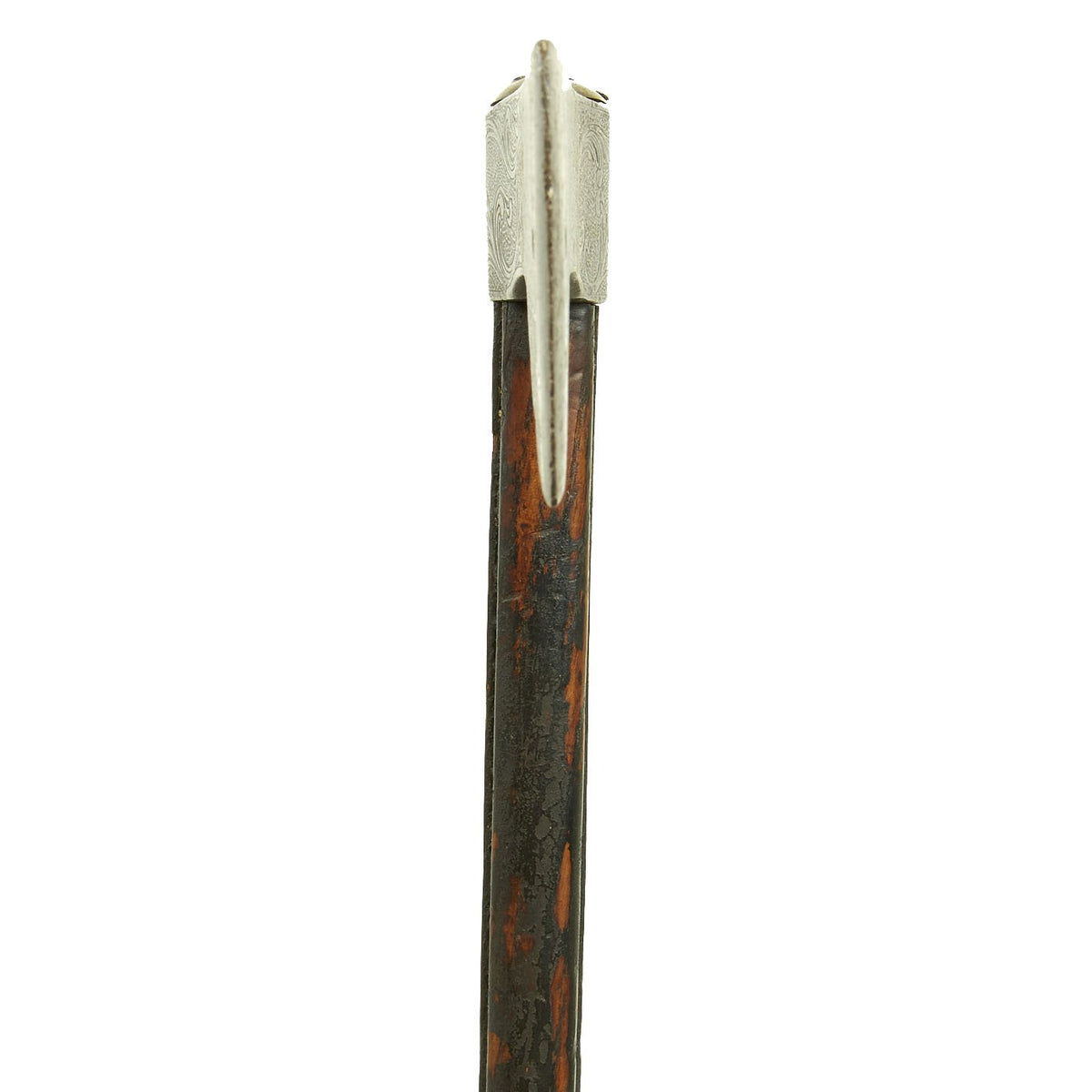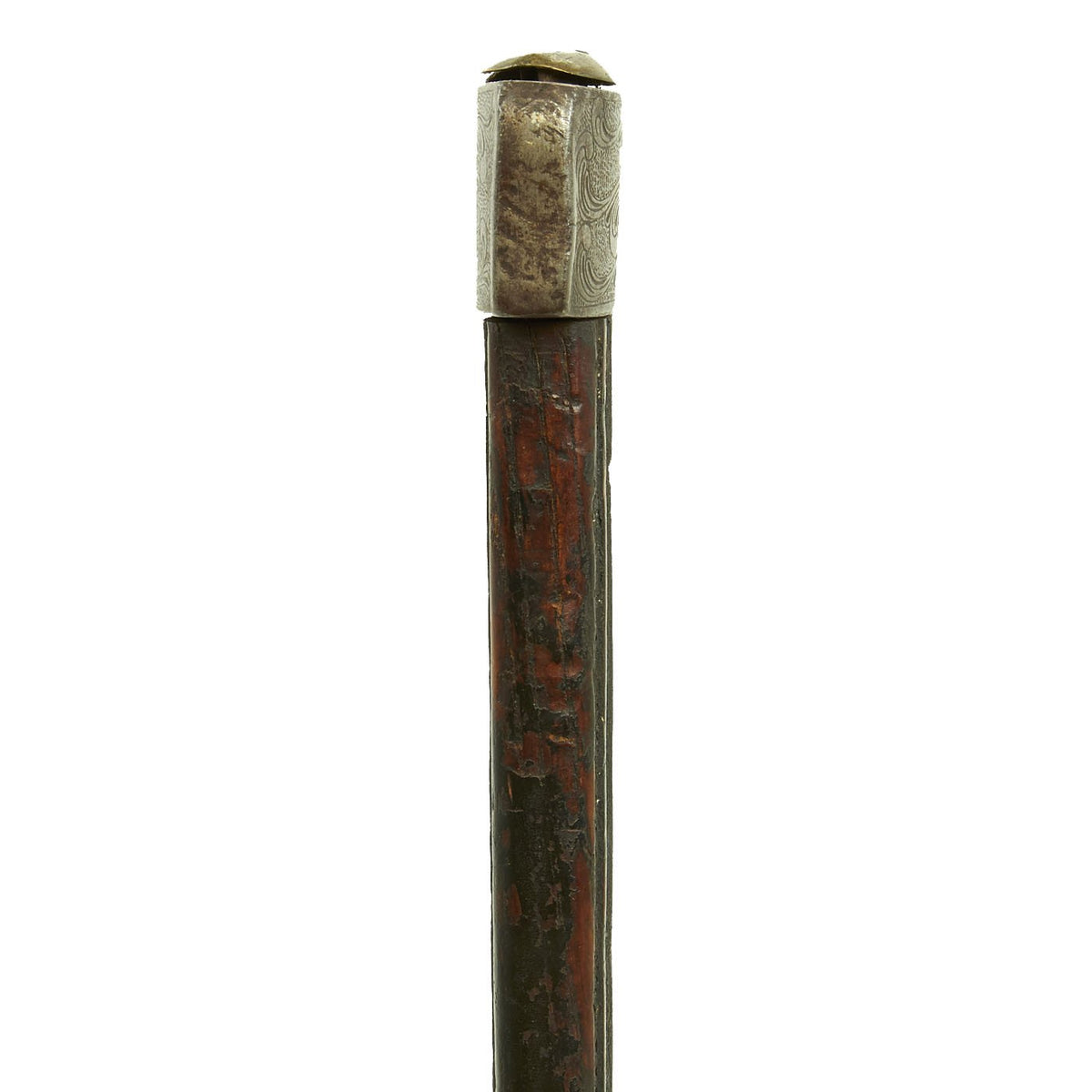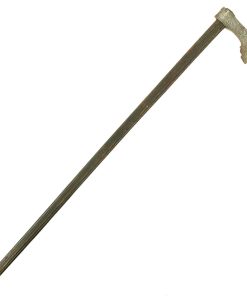Original Early German Axe with Heavily Engraved Head & Original Haft from the Stephan Mautner Collection Original Items
$ 1.995,00 $ 498,75
Original Item: One of a Kind. We just acquired this excellent Early German Axe at a recent sale, and it really is an impressive and exquisite display piece. The iron head measures 5-1/4″ in length with a 2-5/16″ straight cutting edge. The bottom edge is scalloped and both sides are decorated with ornate engraved scrolls on a stippled background. There is a round piercing about 3/8″ from the cutting edge in the center of the blade. The right side features a coat of arms and the left side features a large cypher with a crown over an engraved “K”.
The right side of the axe has a beautifully executed coat of arms. It shows a shield with some grid areas as well as some diagonal line areas, with what looks to be an soldier with a helmet in a box in the center. There is also an Eagle on top of the shield, for association with the Holy Roman Empire, and there look to be dogs or hounds on either side of the shield.
We have made some attempts to identify these markings, but with the large number of small Kingdoms and other principalities in early Germany, identification is nearly impossible.
This ax was probably from the castle of an important family or from a royal collection. A convex brass cap covers the eye on the top. The haft measures 30-3/4″ with fluting on both sides and most of its original black paint. There is an iron ferrule around the bottom of the haft. On the back of the haft in red paint is an old collection number Inv. Nr. 2012. We do not know if this was from the Mautner collection or not.
The axe head retains an even grey patina with some minor nicks to edge. Cap covering the top of the haft has a crack and some denting, retains an aged brass patina. Haft excellent, with some marks from use and scattered areas of flaked original paint. This ax has very nice form and is very well engraved, and could probably be traces to an important German family.
A fantastic research opportunity for a highly motivated collector. Ready to display!
Provenance:
This axe came from the collection of Stephan Mautner (1877-1944), who was a Viennese businessman and artist. He and his wife were deported to a prison camp and died in 1944. It was then passed on to their son in Washington, D.C. and through the family, before being sold into a private collection.
Fast Shipping with Professional Packaging
Thanks to our longstanding association with UPS FedEx DHL, and other major international carriers, we are able to provide a range of shipping options. Our warehouse staff is expertly trained and will wrap your products according to our exact and precise specifications. Prior to shipping, your goods will be thoroughly examined and securely secured. We ship to thousands clients each day across multiple countries. This shows how we're dedicated to be the largest retailer on the internet. Warehouses and distribution centres can be located throughout Europe as well as the USA.
Note: Orders with more than one item will be assigned a processing date depending on the item.
Before shipping before shipping, we'll conduct a thorough inspection of the items you have ordered. Today, the majority of orders will be delivered within 48 hours. The delivery time will be between 3-7 days.
Returns
The stock is dynamic and we cannot completely manage it because multiple stakeholders are involved, including our factory and warehouse. So the actual stock may alter at any time. It's possible that you may not receive your order once the order has been made.
Our policy is valid for a period of 30 days. If you don't receive the product within 30 days, we are not able to issue a refund or an exchange.
You can only return an item if it is unused and in the same state as the day you received it. You must have the item in its original packaging.
Related products
Uncategorized
Uncategorized
Uncategorized
Uncategorized
Uncategorized
Uncategorized
Uncategorized
Uncategorized
Angolan Rebel 1970s era 60mm Inert Display Mortar from Angolan Civil War Original Items
Uncategorized
Band of Brothers ORIGINAL GERMAN WWII Le. F.H. 18 10.5cm ARTILLERY PIECE Original Items
Uncategorized
Uncategorized
Uncategorized
Uncategorized
Uncategorized
Uncategorized

